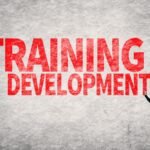Building a Strong Foundation: The Power of Organizational Culture and Values
In today’s dynamic and competitive business landscape, organizations are increasingly recognizing the significance of organizational culture and values. Beyond mere buzzwords, they play a vital role in shaping the identity, behavior, and success of a company. In this blog post, we will delve into the importance of organizational culture and values, exploring how they impact employee engagement, productivity, and overall organizational performance.
Defining Organizational Culture and Values: Organizational culture refers to the shared beliefs, attitudes, and behaviors that characterize an organization. It serves as the foundation upon which the company’s identity and personality are built. Values, on the other hand, are the guiding principles that shape decision-making, interactions, and priorities within the organization. They define what the organization stands for and what it expects from its employees.
Fostering Employee Engagement: A strong organizational culture and clearly defined values foster a sense of belonging and purpose among employees. When individuals resonate with the culture and values, they are more likely to engage actively in their work, leading to increased productivity, innovation, and overall job satisfaction. Employees become advocates of the organization, driving its success through their commitment and dedication.
Attracting and Retaining Talent: In today’s competitive job market, talented professionals seek more than just a paycheck. They desire a workplace that aligns with their values and offers a positive work environment. Organizations with a strong culture and values that promote fairness, inclusivity, and growth attract top talent. Furthermore, a culture that prioritizes employee well-being and development fosters higher retention rates, reducing turnover costs. Driving Organizational Performance: Organizational culture and values have a direct impact on performance.
A positive culture that encourages collaboration, open communication, and continuous learning creates an environment where employees thrive and contribute their best. Moreover, when employees are aligned with the organization’s values, decision-making becomes more consistent and aligned with the company’s strategic goals, leading to improved performance at all levels. Nurturing Innovation and Adaptability: Culture and values play a crucial role in fostering innovation and adaptability. A culture that promotes risk-taking, experimentation, and learning from failures encourages employees to think outside the box and embrace change.
By valuing diversity of thought and encouraging creativity, organizations can adapt quickly to market shifts and remain competitive in an ever-evolving business landscape. Reinforcing Organizational Identity: Organizational culture and values define the unique identity of a company. They differentiate one organization from another, creating a sense of purpose and unity among employees. When employees connect with the culture and values, they become ambassadors of the organization, reinforcing its identity to clients, partners, and the wider community.
Organizational culture and values are not just buzzwords; they are the backbone of successful companies. By fostering employee engagement, attracting top talent, driving performance, nurturing innovation, and reinforcing organizational identity, a strong culture and clearly defined values contribute to long-term success and sustainability. Organizations that prioritize building a positive culture and living by their values create a work environment where employees thrive and contribute their best, resulting in enhanced overall performance and a competitive edge in the marketplace.


































